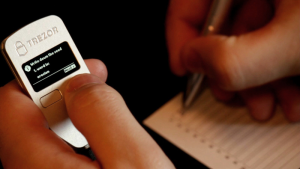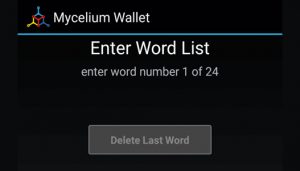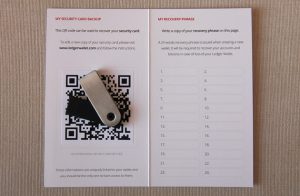You’ve Lost Your Hardware Wallet, Now What?

Hardware wallets are a great way to store bitcoins safely and securely. There are various devices on the market to choose from such as Ledger, Trezor, and Keepkey wallets. The devices act as an extra layer of private key protection from online and exterior vulnerabilities. However, it is possible to lose a hardware wallet, damage the device, and even have it stolen from your possession. As much as we don’t like thinking about these types of events they can happen at any time.
Fortunately, if you happen to lose your hardware wallet there is a good chance you can restore your bitcoins by utilizing the wallet’s seed phrase. All of the abovementioned hardware wallets can be restored to a newly purchased device or wallets such as Electrum, Multibit and Mycelium wallets. Furthermore, the restoration procedure can also be applied to various phone wallets that also provide seed phrases for bitcoin private keys.
Restoring a Hardware Bitcoin Wallet from the Seed

Let’s say you lost your hardware wallet, but you have responsibly kept your backup seed phrase to restore the wallet. For instance, with a Trezor device, you can export your private key to a new Trezor. If you bought a new device from the company, you go to their online interface and press the recovery button. Using your handwritten backup recovery book enter how many words you chose to use for your seed phrase varying from 12-18-24. After entering the random words from your seed, the interface asks for your pin and your new device should be complete.
If you have a Keepkey hardware wallet (other hardware wallets work as well), you can also restore to Multibit and other wallets. The recovery procedure begins with opening Multibit and clicking restore within the password interface. A drop down list will appear giving the user a choice to choose what type of hardware wallet Multibit supports. Enter the seed words in the order you wrote them down and wait to be verified. After confirming your password, a report screen will finish, and access to your funds should now be available.

The same procedure can be applied to other wallets that support the specific seed phrase. Using a Mycelium wallet to restore a Ledger device is basically the same method. Users need a fresh install of the Mycelium software and click “restore backup” at the startup screen. All Ledger seeds are 24 words, and you need to enter each word one at a time during the Mycelium restore process. After the seed phrase is completed, you can now send any of the funds that were stored on your Ledger device.
Backing Up Your Seed May Prevent Losing Bitcoins

Word seeds are important to backup when using hardware wallet devices and even other types of wallets. Seeds written in this fashion are human-readable representations of your private key. Mnemonic code or mnemonic seed phrases have been quite beneficial for humans to transcribe and backup bitcoin keys. Keeping your seed phrase hidden and in a secure location is highly recommended.
Many people have restored their bitcoin using this technique, and people that can offer advice are typically available online. Additionally, there are many walkthroughs published by each and every one of these wallet companies that give step-by-step instructions on how to restore bitcoin.
Sometimes bad things can happen to a bitcoin wallet, but it doesn’t mean the worst-case scenario is inevitable.
Have you ever had to restore your wallet using a seed phrase? Let us know in the comments below.

0 Comments